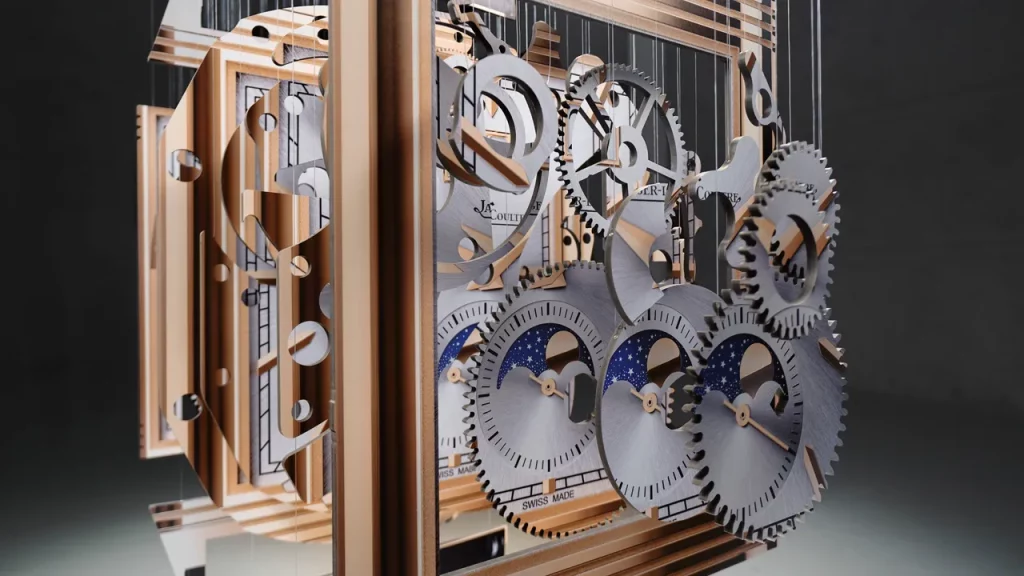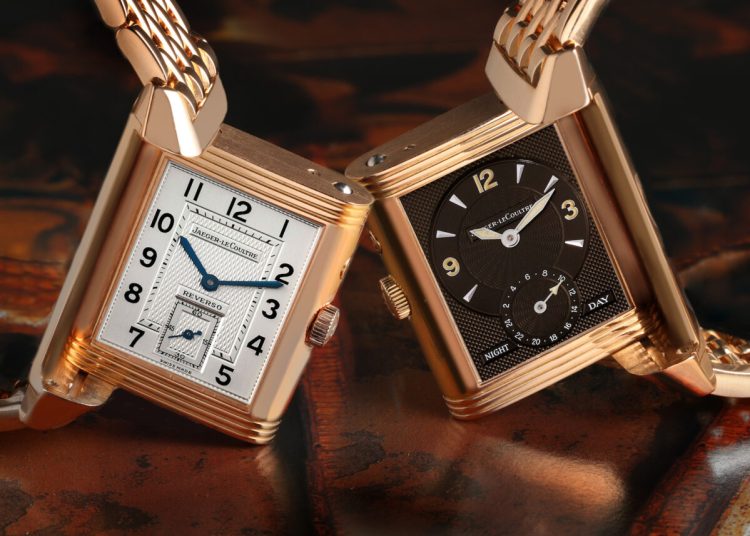Introduction
Jaeger-LeCoultre, one of the most respected names in luxury watchmaking, has long been at the forefront of horological innovation and technical craftsmanship. With a history dating back to 1833, the brand has continually pushed the boundaries of mechanical watchmaking, producing iconic models that combine aesthetic beauty with extraordinary technical achievements.
Known as the “watchmaker of watchmakers,” Jaeger-LeCoultre has contributed immensely to the evolution of Swiss watchmaking. Its watches are a perfect blend of craftsmanship and technology, with each timepiece demonstrating an intricate level of precision and innovation.
This article will explore the craft and technology behind Jaeger-LeCoultre watches, offering a detailed look at the brand’s intricate movements, groundbreaking innovations, and the craftsmanship that has earned it a reputation as one of the leaders in the world of horology.
Chapter 1: The Foundation of Jaeger-LeCoultre’s Craftsmanship
1.1 The Origins of Jaeger-LeCoultre
The Jaeger-LeCoultre brand was founded in 1833 by Antoine LeCoultre in the Vallée de Joux, Switzerland — an area that has been renowned for its watchmaking expertise. With a deep understanding of mechanical engineering and a passion for precision, LeCoultre set out to create timepieces that would define the art of watchmaking for generations.
From the beginning, Jaeger-LeCoultre was dedicated to creating in-house movements and complicated mechanisms, establishing itself as a leader in the creation of both aesthetic and technical masterpieces.
1.2 Craftsmanship at Jaeger-LeCoultre: A Tradition of Excellence
Jaeger-LeCoultre’s success is founded upon the exceptional craftsmanship of its artisans. The brand employs highly skilled watchmakers, engineers, and designers to create each timepiece with meticulous attention to detail. The company’s commitment to excellence is evident in every aspect of its watches:
- Case Construction: Jaeger-LeCoultre’s cases are crafted from precious materials such as platinum, gold, and stainless steel, with a focus on durability and refined finish. Many models also feature highly complex features, such as the Reverso‘s flip-over case, which exemplifies the brand’s ingenuity.
- Dial Finishing: The dials are hand-finished with techniques such as guilloché, enamel, and sunburst patterns, creating an exquisite visual experience. These are processes that require patience and skill to perfect.
- Movement Design: One of the most significant aspects of Jaeger-LeCoultre’s craftsmanship lies in its movement design. The brand is known for producing over 1,200 different calibers and has developed some of the most complicated and accurate mechanical movements in the industry.
1.3 The Role of Innovation in Jaeger-LeCoultre’s Craftsmanship
While Jaeger-LeCoultre stays true to the age-old traditions of Swiss watchmaking, it is equally known for its pioneering spirit. The company has consistently introduced cutting-edge technological innovations and advanced horological mechanisms that push the boundaries of watchmaking.
Chapter 2: The Technological Advancements of Jaeger-LeCoultre
2.1 In-House Movements: Masterpieces of Mechanical Engineering
Jaeger-LeCoultre is renowned for its ability to create in-house movements, each crafted to the highest standards of mechanical precision. Unlike many other luxury watch brands, which outsource their movements to third-party manufacturers, Jaeger-LeCoultre designs and manufactures almost all of its calibers in-house, allowing for complete control over the performance and craftsmanship of each piece.
Key In-House Movements and Their Technological Innovations:
- Caliber 101: Introduced in 1929, this is the smallest mechanical movement ever made and is often used in the brand’s women’s watches. Despite its tiny size, the Caliber 101 is a marvel of precision and complexity.
- Master Control Caliber: Known for its superior accuracy and reliability, this movement powers several models within the Master collection. It features a high-frequency oscillation that improves timekeeping and increases durability.
- Duomètre Movement: One of Jaeger-LeCoultre’s most impressive innovations, the Duomètre uses a Dual-Wing movement that separates the energy for timekeeping and complications, offering an unprecedented level of precision.
- Gyrotourbillon: One of the most complex movements ever created, the Gyrotourbillon is a multi-axis tourbillon designed to combat the effects of gravity. It showcases Jaeger-LeCoultre’s mastery in multi-dimensional horology.
2.2 The Art of Complication: Pushing the Limits of Watchmaking
Jaeger-LeCoultre is one of the few brands that has mastered the art of complicated watches, consistently producing some of the most technically sophisticated timepieces in the industry. The brand has a long history of creating timepieces with multiple complications, including:
- Minute Repeater: A minute repeater allows the wearer to hear the time via a series of chimes. Jaeger-LeCoultre’s minute repeaters are highly regarded for their rich sound and clarity.
- Tourbillon: The tourbillon is a mechanism designed to reduce the effects of gravity on a mechanical movement. Jaeger-LeCoultre has created multiple versions of the tourbillon, including multi-axis versions like the Gyrotourbillon.
- Perpetual Calendar: Jaeger-LeCoultre’s perpetual calendar complications are known for their accuracy and ease of use, allowing the wearer to track the date, month, and leap year without needing manual adjustments.
2.3 Advanced Materials: Enhancing Performance and Aesthetics
Jaeger-LeCoultre is also known for its use of advanced materials in watchmaking, which improve both the performance and aesthetic appeal of its timepieces. Some of the innovative materials used by the brand include:
- Ceramic: Lightweight, scratch-resistant, and highly durable, ceramic is used in some of Jaeger-LeCoultre’s models to provide a modern touch.
- Titanium: Known for its lightness and strength, titanium is often used in sporty models, offering enhanced comfort without sacrificing durability.
- Pink Gold: Jaeger-LeCoultre’s pink gold alloys are known for their exceptional beauty and are frequently used in the brand’s high-end models.

Chapter 3: The Craftsmanship Behind Jaeger-LeCoultre’s Iconic Models
3.1 The Reverso: A Design Icon
The Jaeger-LeCoultre Reverso is undoubtedly the brand’s most iconic model. First introduced in 1931, the Reverso was designed specifically for polo players, who needed a watch that could survive the impact of the sport. The flip-over case allows the watch’s dial to be protected from scratches, making it as functional as it is beautiful.
The Craftsmanship of the Reverso
- Art Deco Design: The Reverso is an enduring example of Art Deco design, with its rectangular case, clean lines, and geometric forms.
- Customization: Jaeger-LeCoultre offers the Reverso in multiple material options (steel, gold, platinum) and allows for personalized engravings on the reverse side, making each Reverso unique to its owner.
3.2 The Master Ultra Thin: Minimalism Meets Precision
The Master Ultra Thin collection is known for its sleek, minimalist designs and exceptional precision. With its thin case and classic aesthetic, the Master Ultra Thin is a perfect example of how Jaeger-LeCoultre combines elegant design with mechanical sophistication.
Crafting the Master Ultra Thin
- Ultra-Thin Movements: The movement inside the Master Ultra Thin is engineered for maximum precision while maintaining an ultra-slim profile.
- High-Quality Finishing: The case is finished with high-polish surfaces, while the dial features a sunburst effect, adding depth and dimension.
3.3 The Duomètre: Innovation in Movement Design
The Duomètre series represents one of Jaeger-LeCoultre’s most ambitious technical achievements. It features the Dual-Wing system, which separates the energy for timekeeping and complications, allowing for greater precision and longer power reserves.
The Craftsmanship of the Duomètre
- Dual-Wing System: The system relies on two separate barrels, each dedicated to a different function, allowing them to operate independently without compromising accuracy.
- Complex Dial Design: The dial of the Duomètre showcases its intricate mechanics, with multiple sub-dials displaying various complications.
Chapter 4: Jaeger-LeCoultre’s Innovations and Patents
4.1 Groundbreaking Patents**
Jaeger-LeCoultre holds numerous patents that have shaped the modern watchmaking industry. Some of the most important include:
- The Reverso Case: The reversible case design was revolutionary, and its ability to protect the watch from damage while remaining functional was a true innovation.
- Caliber 101: The smallest mechanical watch movement in the world, introduced in 1929, is another example of Jaeger-LeCoultre’s innovation.
- Gyrotourbillon: A multi-axis tourbillon that changes the dynamics of movement accuracy by compensating for gravity in multiple directions.
Conclusion: Jaeger-LeCoultre – A Legacy of Craft and Technology
Jaeger-LeCoultre’s craft and technology are the cornerstones of its success. The brand’s legacy is defined by its commitment to innovation, precision, and design excellence. Through in-house movements, groundbreaking complications, and the continuous pursuit of technical mastery, Jaeger-LeCoultre has earned its place as one of the most prestigious names in horology.
Whether it’s through the Reverso, the Duomètre, or the Master Ultra Thin, Jaeger-LeCoultre continues to produce watches that are as technically advanced as they are visually stunning, and the brand remains a symbol of watchmaking excellence for future generations to admire and appreciate.





































